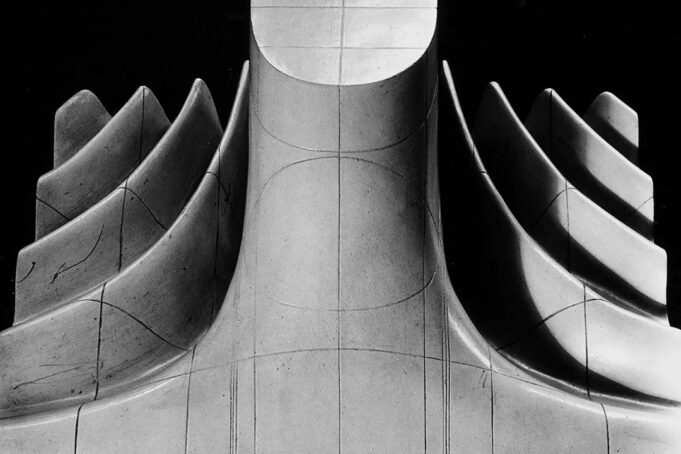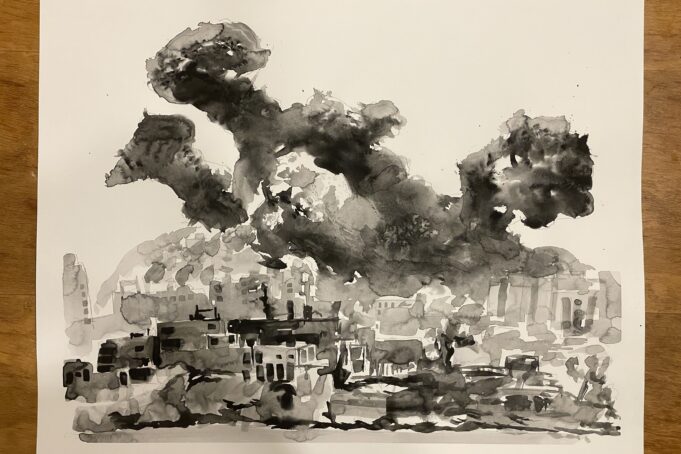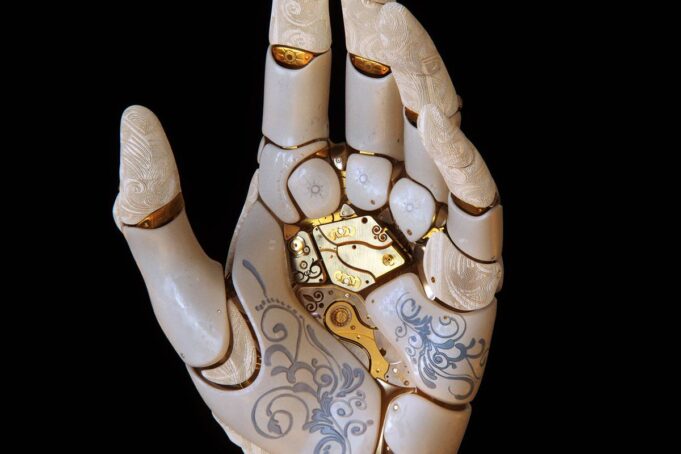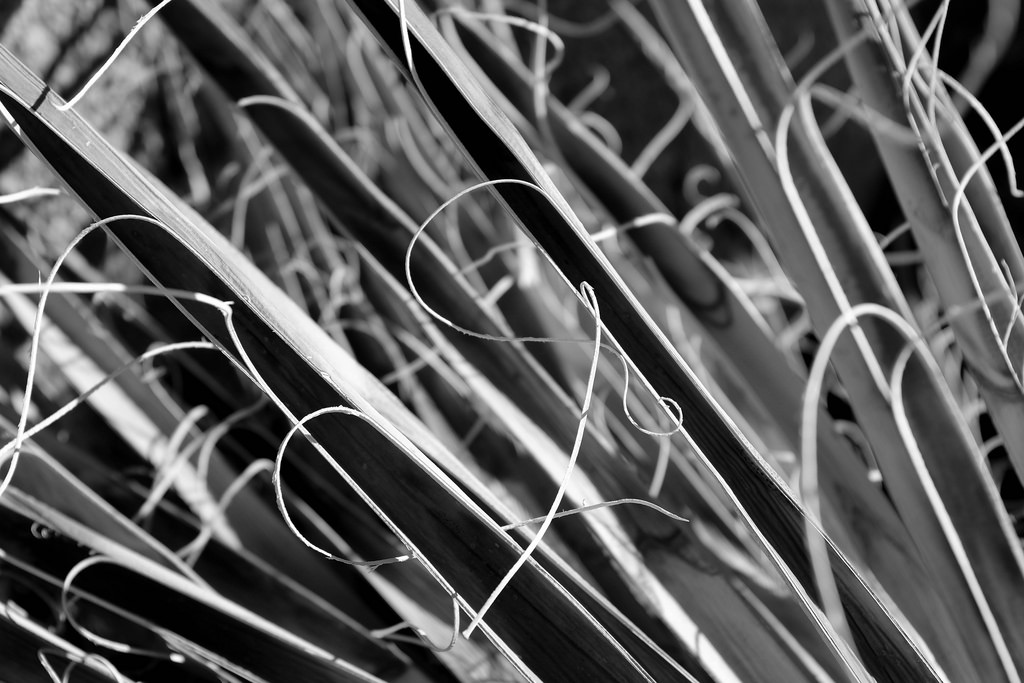A couple of years ago I needed to furnish my new, but empty, office when I found an old wooden table by a dumpster and decided it would be my desk. I spent a weekend stripping the finish, sanding it down smooth and refinishing it. The power of using my hands and a generous amount of googling to turn something old and discarded into something beautiful and useful was immensely satisfying. I was hooked.
After buying my first home I had a lot shelves I wanted to add to closets. Eventually I started designing and building furniture to fit particular spaces. Most importantly I had a small 6’x8′ back patio behind my townhouse where I could work. This might sound small, but it was a lot better than clamping things to the dining room table.
It’s been a few years since then. I’ve finished a few more projects and shared a lot of them in process on Instagram. More than a few friends have asked what tools they need to get started with woodworking so I decided to make it shareable.
What Tools Do You Really Need?
It can be tempting to buy power tools because they are, well, powerful. But the noise and air-blown sawdust can make them a bad fit for working inside apartment buildings or in shared spaces. On the other hand, a small kit of hand-tools are how most furniture has been made throughout the hundreds (thousands if you count back to Rome) of years of woodworking history. And for me, it’s a lot more relaxing using tools that can’t cut my hand off in a moment of inattention.
A lot of my decisions on which tools to buy and keep flow from living in the city, in a townhouse, without much indoor storage or room to work. That paired with some early influence from youtube woodworker / curmudgeon, Paul Sellers, means that I have bias for tools where the accuracy is in the hand of the person rather than embedded in the tool. Beyond that, there is a real practicality in a set of tools that can build all kinds of furniture (bookshelves, benches, cabinets, desks etc.) with a set of tools that can fit in a small tool-box.
I started seeking out estate sales and yard sales looking for hand tools and slowly began picking up and restoring old tools. With a very few exceptions, the tools I use every day I bought used and spent time getting back into shape.
The list below are the hand tools I would say are essential to start with. You can have them all for less than $100 total. Where used tools are a good option I’ll share a price range where I’ve seen and bought these tools.
Universal-Cut Japanese Pull-saw
My father-in-law who has been working wood his whole life, surprised me by recommending I buy a Japanese pull-saw. “These are NICE,” I remember him saying.

Unlike most western saws you’re used to seeing which cut on the push stroke, these cut on the pull. This also pulls the blade straight even when it is made up of very thin steel. This plus post-war manufacturing magic and heat-treating the tiny teeth after sharpening mean that these saws cut better than any saw you’ve ever used. My first blade stayed sharp a year and half of regular use.
The universal cut has teeth set up to work for cutting across the wood fibers as well as down them which is nice not to have to worry about when you are still learning to read the grain.
Caution: not all saws and blades are created equal. I’ve had nothing but good experience with the Z-Saw brand.
Buy New Here ~$25
Combination Square
This is your main tool for laying out cuts and joints. You can pick up cheap ones at the hardware store but they likely aren’t very precise.

Starrett is the industry standard but they are pricey (~$100) new. I use a 6 inch combination square for most of my work though occasionally I find a 12 inch useful. Products Engineering company makes very finely machined squares that can be had for much more affordable prices.
Buy Used: $5–15
Buy New Here: $15–25
Marking Knife
Literally any small knife you can keep sharp will do here. But the key to straight, sharp cuts with the saw is marking out your lines with a knife which makes a little groove for the saw-teeth to follow.

I’ve used pocket knives, little whittling / carving knives, really anything small and sharp you can control well in your hand.
I particularly like these one-beveled Japanese knives that are flat on one side so you can put the flat side against your square and slide it down. But, be careful, they are brittle, high-carbon steel, so drop it and you may damage the tip. A fun project is building a wooden scabbard for it.
Buy New Here: ~$20
F-Clamps
F- clamps are extremely powerful and easy to use. And they are easy to use to hold your work in place until you can build a workbench.
Bessey and Stanley are great brands to pick up used. But the budget Harbor Freight variety work just fine. Start with a pair of f-clamps at least a foot or two long.
Buy more when you’re building something that needs them.
Buy Used: $5–10
Buy New Here $11
Chisels
Chisels are easy to find used and to buy new. I pick up used ones with or without handles whenever I see them. I avoid big nicks or chips in the cutting edge because they’ll be work to get out. I started with a cheap Chinese made set with plastic handles from the hardware store: 1″, 3/4″, & 1/2″. They performed just fine as long as I kept them sharp.
Most of the time now I use a 3/4″ chisel I always keep extremely sharp, a 1/8″ chisel I use for getting into tight spaces or cutting grooves for the bottoms of boxes or small drawers, and occasionally the large 1.5″ chisel in the photo above for large subtractive shaping of stock for carvings (hence the two handed handle).
Chisels are the essence of woodworking: a sharp wedge that removes wood. The plane is just a chisel in a housing. There are a few types but you should start with “bench” chisels which have a beveled cutting edge and beveled sides. You’ll use these the most anyway.
You can hit it with any hammer you may have (smaller the better) or make your own chisel mallet or hammer.
Buy Used: $2–10
Hand Plane (#4)
First: it’s a plane or “hand plane.” “Planers” are powered versions of the hand held tool with a rotary cutter. “Power planers” are big rotary cutters with an in-feed that flatten out boards.
Record, Stanley, Dunlop, Bailey, Miller’s Falls; these are all fine brands you might find in various states of disrepair or rust at a yard sale. I’ve paid as little as $5 and as much as $30 for hand planes at yard and estate sales. Look for cracks in the cast iron body, especially around the opening on the bottom where it joins the sides and makes a weak spot. The bodies are cast iron and hard to repair if cracked. You can check how flat the bottom is against a ruler or your new combo square, but this can be flattened with sandpaper taped to glass or granite or something else very flat.
Look to see if any pieces are missing and if there are any big nicks or deep pits from rusting in the blade. Nicks are work to fix. Pits are hard. Though Hock Tools sells excellent replacement “irons” or blades.
Sadly it’s hard to find good quality planes new for under ~$100. Stanley’s Sweetheart line are quality. Wood River, Veritas and Lie-Nielson are top of the line reproductions of classic Stanley models.
But even the perfect out of the box Lie-Nielson will eventually dull and go out of tune and require sharpening, and set-up. So when you are starting, it’s best to get an old tool that needs some TLC for $15–20 and learn how to take it apart, clean it, put it back together and really get it to sing. There are lots of models but the #4 is generally regarded as the first and most indispensable plane for your kit.
More than any other tool I use, hand planes provide the most satisfaction to use because, like musical instruments, the more time you spend with them, the better results you get. As your skill grows you learn to read the grain better, hone sharper and you can get glassy smooth finishes and bright, sharp grain patterns from just a few strokes that you could never get from sanding all day long through a dozen grits. But beware: there is also heartache once you tear out a chunk of that glassy surface where the grain changes direction. Learning when and how to avoid doing this is a lifelong journey.
Buy Used: $10–30
Buy New Here: $80-$350
Sharpening Stones & a Leather Strop
The key to having fun with planes and chisels is keeping them sharp. There are a million opinions on this. I mostly follow Paul Sellers’ guidance on freehand sharpening though I haven’t invested in his high end DMT diamond plates. I started with cheap stones from Harbor freight but they were very very coarse and never got very a very fine edge.
I started making progress when I bought a King Combination Stone 250/1000 grit. The grits are on the same scale as sand-paper and the higher the grit the slower and finer the cut.
Then I acquired some medium and glassy-fine “Arkansas Stones” which is the market name of various novaculite stones that naturally occur in Arkansas. They are my preferred setup for maintaining an edge on my chisels, planes, marking knives, gouges etc.
The biggest breakthrough came when I took a friend’s advice, ordered some green honing compound (chromium oxide abrasive in green clay) and rubbed it into a strip of leather I glued to a board. 40 strokes pressing the edge hard into the strop leveled up my sharpening to hair-shaving levels and enabled me to simply push chisels through wood with hand pressure in many cases rather than driving them through with a hammer. It feels amazing and leaves a glassy finish behind in the wood. And they can slice into your hands faster than you can notice.
Buy New Here — King Stone — $18
Buy New Here — Honing Compound — $3
What to Make Next?
I got started with this kit. Pretty soon I built a bench with a vise and decided I really needed a spoke-shave to start shaping contours and making long flowing sinuous edges. There are lots of tools you can make yourself once you get confident working with this set.
When I was first getting started I spent a lot of time on Pinterest and Instagram browsing other people’s projects to get ideas and sometimes walkthroughs on how to make tools and jigs. To this day, engaging the woodworking communities on Instagram and Youtube remains one of the most rewarding and encouraging forces in my woodworking practice. You can absorb so much in terms of skill, technique and strategy just browsing around. Jump in. There’s a lot of good stuff and people are very friendly.
Feel free to reach out to share your projects or ask for help. You can find me @mattlumpkin on instagram and twitter.
—
P.S. All the links to Amazon are affiliate links. So if you found this helpful, and you want to buy that Z-Saw you can click through also help my tool-fund a little bit. 🙂






